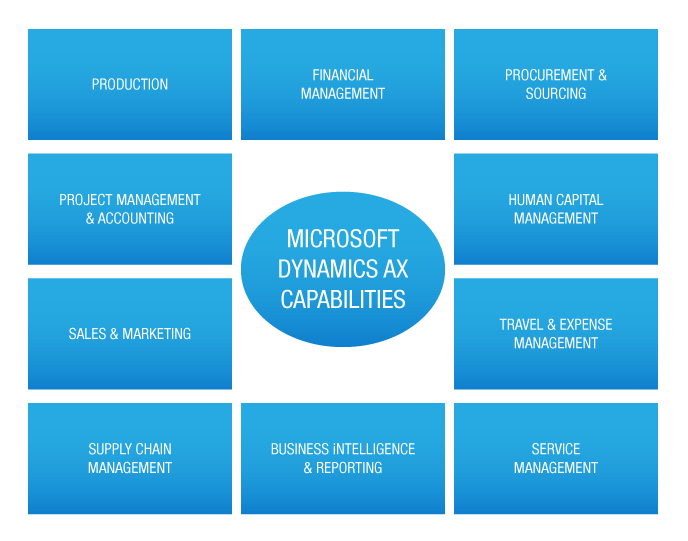Comparison between Dynamics CRM and the Dynamics AX CRM
For starters, MS Dynamics AX 2012 is a complete ERP system whereas Microsoft Dynamics CRM is a standalone CRM system. They are two different products from the same company. Since Dynamics AX is a complete ERP system, it can be used to manage a business’ entire operations like Warehousing, Finance, Trade & Logistics, Production, Accounting, Master Planning, CRM and HR. Whereas the Dynamics CRM system is a standalone CRM product from Microsoft that provides Sales, Marketing and Service Management capabilities only via individual modules. The Dynamics CRM is a standalone web application whereas Dynamic AX 2012 is a complete business solution, which also offers CRM functionality via an integrated module – the Dynamics AX CRM.
Since the Dynamics AX CRM module is part of the overall Dynamics AX ERP, it provides deep integration with other modules in the ERP, as well as features like product configuration, flexible pricing, service management and project management capabilities. It does however lack some of the more traditional capabilities offered by CRM systems. The main differences being in the use of connected/disconnected features, native integration with Outlook and the way in which typical CRM systems handle some processes, particularly relating to Sales Orders Management and Service.
In short, the Dynamics AX CRM module covers the functional scope offered by typical CRM systems like the Microsoft Dynamics CRM such as the ability to manage Opportunities, Activities, Quotations, Sales Orders, Service Agreements, etc., but the way it provides this functionality is what separates it from the Dynamics CRM and other typical CRM Systems. For example, if you want to share data from the Dynamics AX CRM module, the Dynamics AX platform is its preferred medium for data sharing. If however you need to share data with other systems or require some other functionality not supported by the system, you will need to develop and implement that functionality via custom coding.
The Dynamics CRM system on the other hand is much easier to use and customize, as it provides a lot of options and is also more “plugged” to the MS Office suite.
Similarly in terms of Mobility, the Dynamics CRM and the Dynamics AX CRM module are vastly different. The Dynamics CRM (whether online or on premise) for example is natively integrated with MS Outlook thanks to the “Dynamics CRM Outlook Connector”, but also offers a pre-built “mobile view” that controls the way information is displayed on mobile devices. It enables you to easily synchronize your emails, agenda, contacts, tasks and also maintains a light SQL database copy that allows you to work while offline.
For capabilities related to Services, both products offer contract management, case management and service description features, with the ability to follow up on requests. The Dynamics AX CRM however offers deeper integration with the item database.
In terms of Opportunity management features, both Dynamics AX CRM and the Dynamics CRM distinguish “leads” from other types of prospects and/or customers. Both products provides features for managing activities around opportunity management.
In the Dynamics AX CRM though, you can use virtual companies to extend the duplicate detection functionality, which allows to detect duplicates at the group level (by sharing the Global Address Book). This practice is rarely done though.
The Dynamics AX CRM also requires X++ skills in order develop and implement any customizations, while the Dynamics CRM customizations can be done using.NET and other related components
These are just some of the high level differences. The table below will give you the complete list of differences that make these 2 system distinct from each other.



Comments
Post a Comment